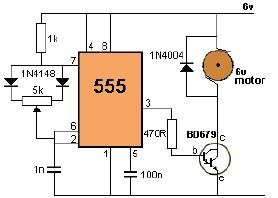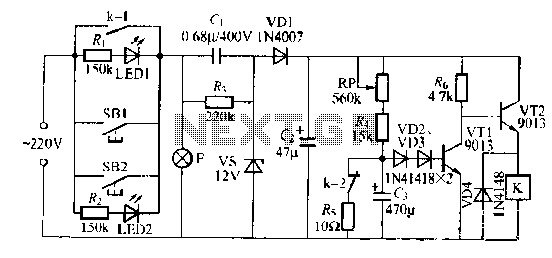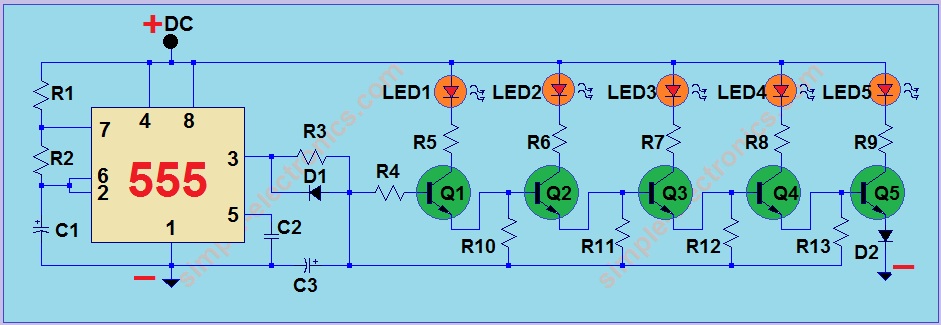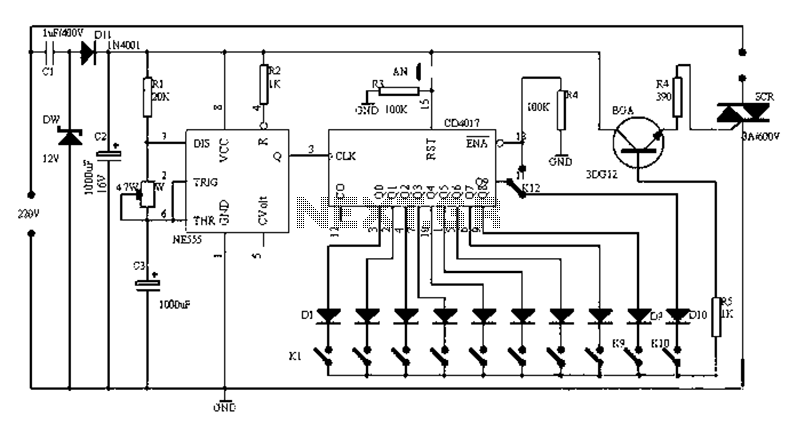
Schematics Ultra-Long Time Delay By IC Timer 555 PCB

This circuit is designed to provide long time delays using the integrated circuit Timer 555. It utilizes the NE555 to generate pulse frequencies, which are then divided by a 4017 decade counter to achieve the desired delay. The component S1 is used to select between the Reset or Run modes of the circuit.
The circuit employs the NE555 timer in a monostable configuration to generate a pulse when triggered. The duration of this pulse can be adjusted by varying the resistor R2 and the capacitor connected to the timing circuit. The output pulse from the NE555 is then fed into a CD4017 decade counter, which counts the pulses and provides an output after every ten pulses. This effectively extends the timing capability of the circuit, allowing for longer delays.
The S1 switch serves a critical role in the operation of the circuit. When in the Run position, the circuit operates normally, generating the time delays as designed. In the Reset position, the circuit can be reset, allowing it to be re-triggered without waiting for the previous cycle to complete.
The use of the 4017 counter is particularly advantageous as it provides multiple outputs, enabling the circuit to be used in applications where sequential timing is required. Each output from the 4017 can be utilized to trigger additional components or circuits, expanding the functionality of the delay circuit.
In summary, this circuit effectively combines the timing capabilities of the NE555 timer with the counting capability of the CD4017, allowing for precise control over long time delays in various electronic applications.This be the circuit delays to have for a long time. By use the integrated circuit Timer 555 or Ultra-Long Time Delay By IC Timer 555 by R2 use for fine the frequency of pulse from the integrated circuit NE555 bring divide by wasp with 4017 each 10 in the end the time delays to follow want. Part S1 for choose Reset or Run of the circuit. 🔗 External reference
The circuit employs the NE555 timer in a monostable configuration to generate a pulse when triggered. The duration of this pulse can be adjusted by varying the resistor R2 and the capacitor connected to the timing circuit. The output pulse from the NE555 is then fed into a CD4017 decade counter, which counts the pulses and provides an output after every ten pulses. This effectively extends the timing capability of the circuit, allowing for longer delays.
The S1 switch serves a critical role in the operation of the circuit. When in the Run position, the circuit operates normally, generating the time delays as designed. In the Reset position, the circuit can be reset, allowing it to be re-triggered without waiting for the previous cycle to complete.
The use of the 4017 counter is particularly advantageous as it provides multiple outputs, enabling the circuit to be used in applications where sequential timing is required. Each output from the 4017 can be utilized to trigger additional components or circuits, expanding the functionality of the delay circuit.
In summary, this circuit effectively combines the timing capabilities of the NE555 timer with the counting capability of the CD4017, allowing for precise control over long time delays in various electronic applications.This be the circuit delays to have for a long time. By use the integrated circuit Timer 555 or Ultra-Long Time Delay By IC Timer 555 by R2 use for fine the frequency of pulse from the integrated circuit NE555 bring divide by wasp with 4017 each 10 in the end the time delays to follow want. Part S1 for choose Reset or Run of the circuit. 🔗 External reference





